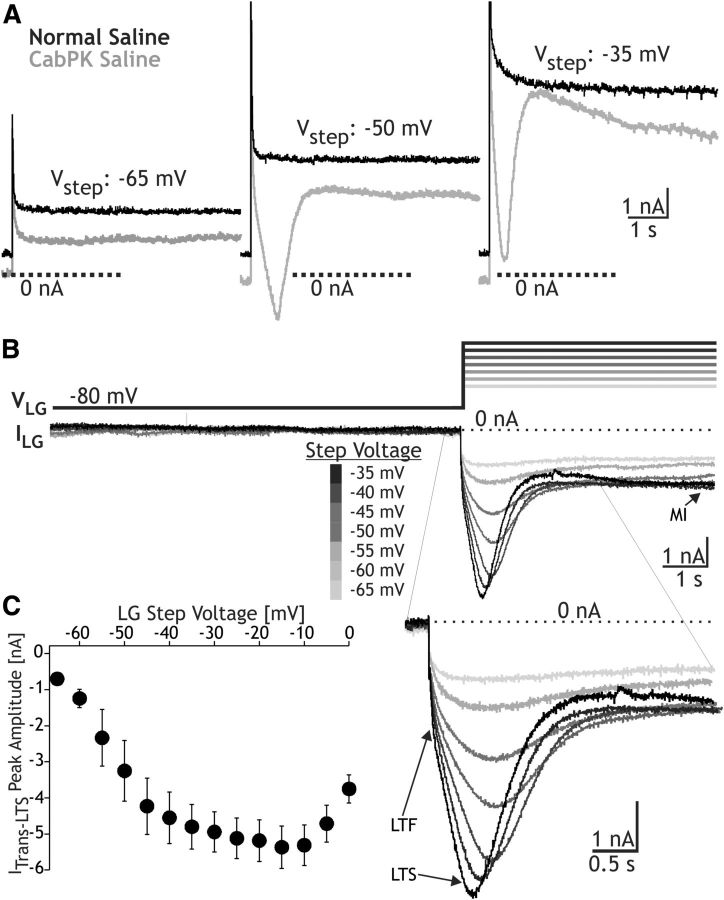Figure 3.
CabPK application influences both transient and sustained voltage-dependent inward currents in the LG neuron. A, Example raw current traces recorded during TEVC using a voltage step protocol (Vhold = −80 mV) to the indicated step potentials, during superfusion with voltage-clamp saline under control and CabPK conditions (see Materials and Methods). Note that, during the two more depolarized steps (−50 and −35 mV) in the presence of CabPK, there was a relatively large amplitude transient inward current, while during all three steps there was a reduction in the amplitude of the sustained outward current relative to the control condition. B, Top, CabPK-influenced currents (CabPK condition − control condition) resulting from a voltage step protocol during TEVC included a low threshold, fast transient current (ITrans-LTF), ITrans-LTS, and sustained current (IMI). ITrans-LTS was predominantly responsible for the transient current, while IMI was predominantly responsible for the reduced outward current in A. ITrans-LTF did not exhibit a distinct, separate peak in this experiment (Figs. 4A, 5A), but is evident as an initial steep inward slope before the shallower rising slope representing ITrans-LTS. Entire voltage step protocol (hold at −80 mV, 10 s; step to test voltage, 6 s) is shown. Bottom, Expansion of the current traces to highlight the events occurring during each voltage step. C, I–V plot of the current (mean ± SE) at the peak of ITrans-LTS for the step protocol used in experiments such as that in B (n = 9).

